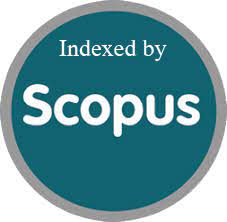Synergistic Effects of Natural Binding Agents on the Performance of Agricultural Residue-Based Chemical Free Handmade Paper
Abstract
Due to environmental concerns and legal constraints, the paper industry has been investigating eco-friendly and sustainable alternatives to synthetic binding agents. Natural binding agents that can improve paper strength and printability while lowering the carbon footprint of the industry include proteins, starch, gums, and cellulose derivatives. Promoting the production of handmade paper from agricultural waste (rice straw and sugarcane bagasse) is the goal of the current project. This experiment uses variable cellulose ratios made from diverse agricultural residues, which changes the production process. The handmade technique, which uses these raw residues in different ratios and analyses the parameters of handmade paper by varying concentrations of natural binding agents (starch, aloe vera, corn flour and gum rosin), is a fairly simple and environmentally safe method used to make craft papers. It is shown that the substances are both economical and environmentally beneficial. This study shows that the sectors that make handmade paper can find sustainable alternatives in agricultural waste. The function of different natural binders, their relative benefits over synthetic binders, and their use in the production of paper are all examined in this study. Among all the handmade paper samples across the different binding agent tables, the best-performing combination is observed in the sample using Binding Agent (Gum rosin) at 5% concentration with Highest tensile strength: Up to 6.8 kN/m, Highest burst index: Reaching 6.9 KPa·m²/g, Good GSM values: Often above 350 g/m², Controlled thickness: Typically between 1.4–1.9 mm and Lowest absorbency: As low as 0.5–0.9 g/m².




